Calorie Dense Foods Thats Easy to Grow in Urban Areas
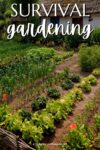
If you're like most gardeners, you pack your growing space to full capacity: Tomatoes, lettuce, peas, beets, carrots, and cabbage are common garden crops. But planning a survival garden — one that will sustain your family in times of need — requires a bit more consideration.
Be sure to check out my huge collection of gardening articles here!
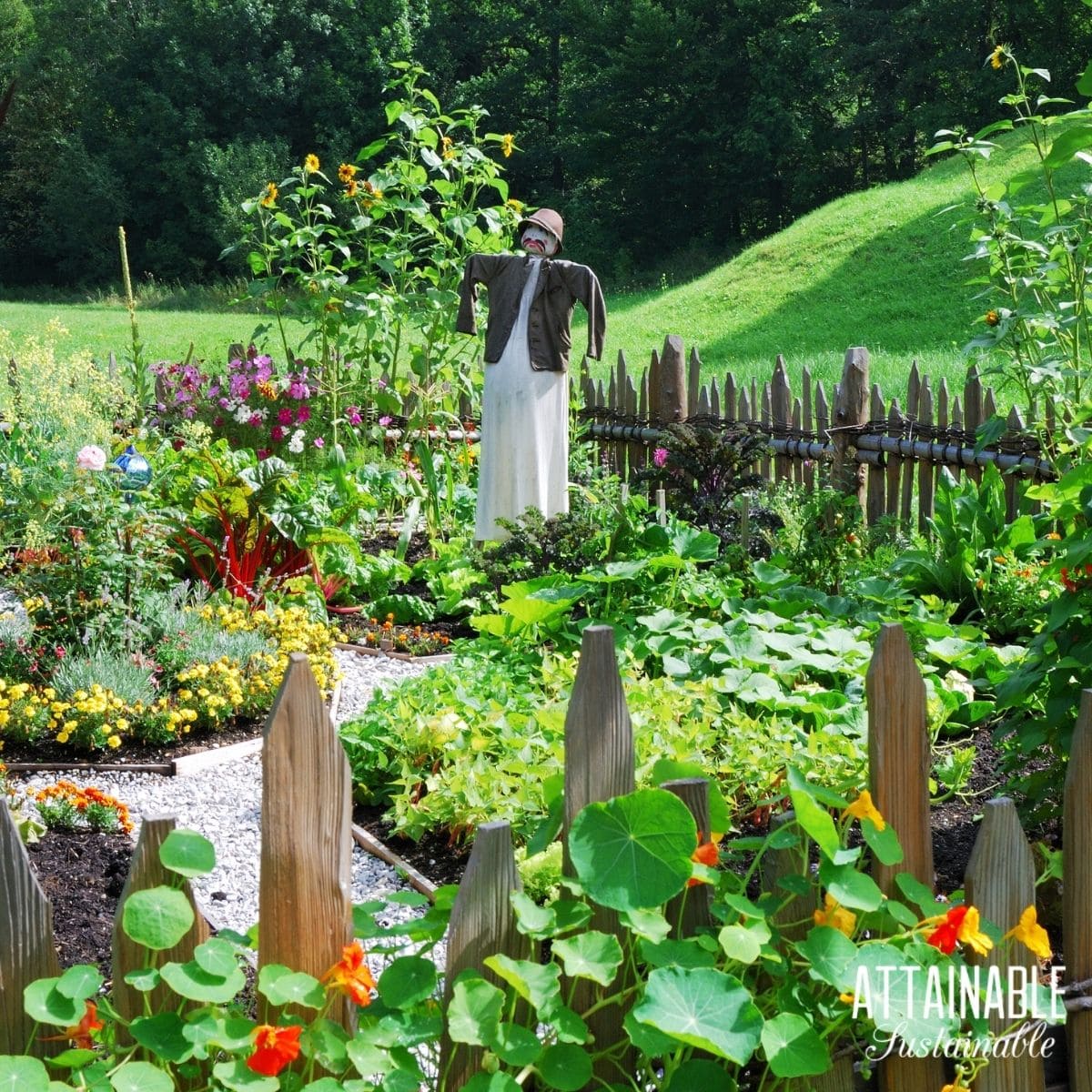
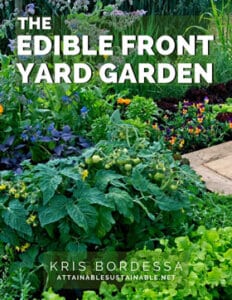 The Edible Front Yard Garden
The Edible Front Yard Garden
Does your homeowners association prevent you from growing food in the front yard? What if they never even KNEW? My ebook, The Edible Front Yard Garden will show you how!
Why Plant a Survival Garden?
There are plenty of reasons to consider survival gardening, even though that may sound a bit… apocalyptic. The day-to-day benefit of growing a vegetable garden that will sustain your family is simply budget. Fewer trips to the store means less money spent. With prices soaring, that's a huge incentive!
But there are other considerations as well. Imagine if you will a situation that forced you to stay close to home for an extended length of time, with limited access to shopping. In fact, a lot of us saw that happen, didn't we?
 If you're a beginning gardener stumped about how to get started and where you can fit a garden into your limited space, be sure to check out my course, The 5-Gallon Garden!
If you're a beginning gardener stumped about how to get started and where you can fit a garden into your limited space, be sure to check out my course, The 5-Gallon Garden!
If you're growing a garden, you can gorge yourself on fresh veggies all summer long, then preserve marinara sauce, pickles, salsa, relishes, and chutneys to fill your pantry for the winter, but you're still going to need to supplement your diet with something more. Something filling and hearty and full of calories to sustain you.
If you're forced to live off just what your garden produces—even if it's a giant garden—you're going to get hungry really quickly unless you change the way you think about gardening. You'll want to include some high calorie vegetables and starchy staple crops in your survival garden plan.
Grow Some Greens!
Ready to grow fresh greens, no matter WHERE you live? Sign up for my
FREE quick-start guide and start growing some of your own food!
Get the Guide!
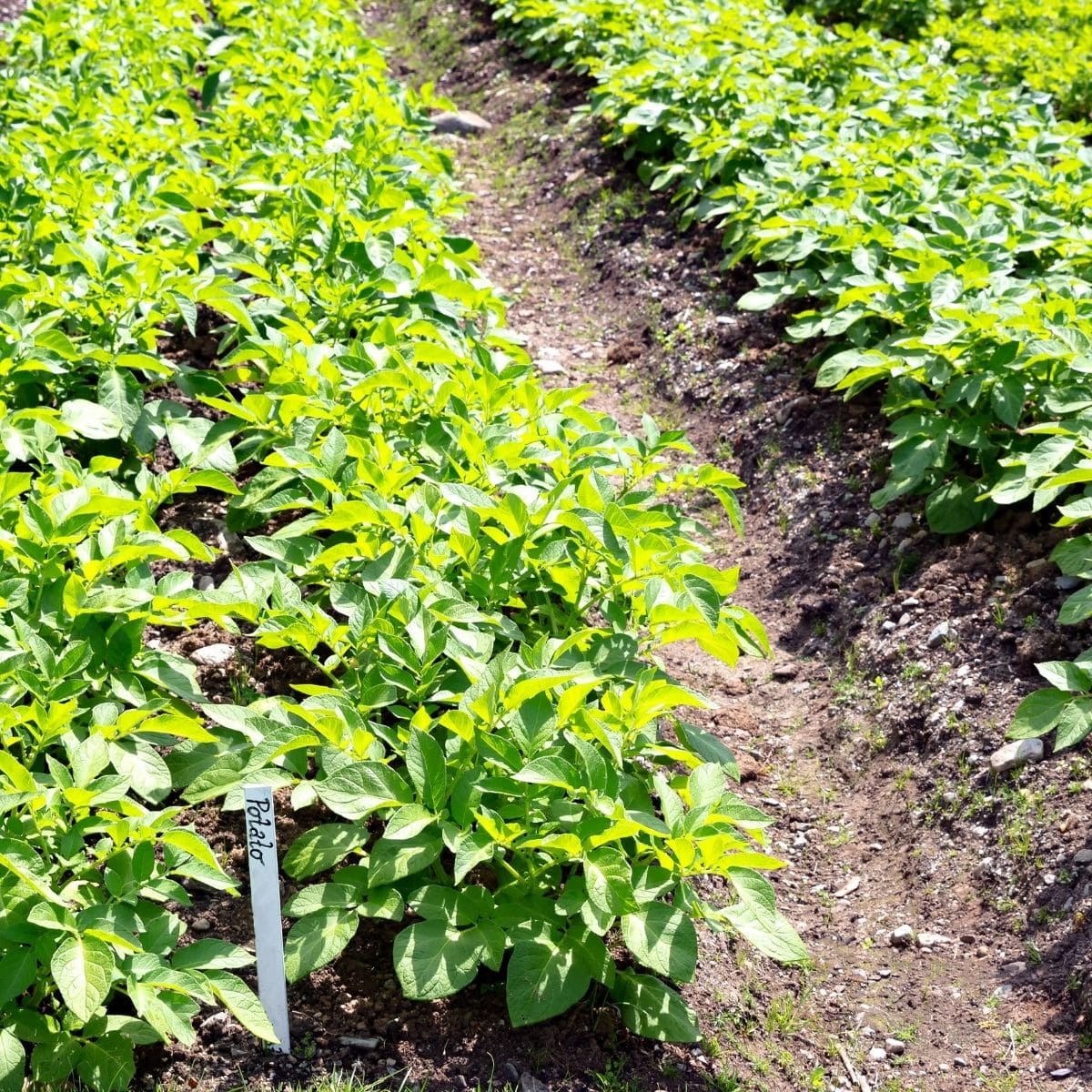
What to Plant
An adult human requires between 1,600 and 3,000 calories per day. Choosing crops that are calorie dense and nutritious will go a long way toward providing sustenance. The following options are those that can go a long way toward filling up your belly!
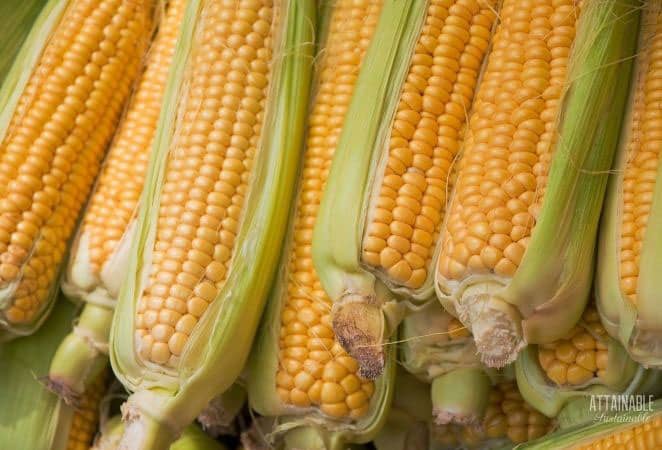
Corn
Regular sweet corn is best eaten fresh from the garden and does not store well. It's a great option for in-season calories, but an ambitious gardener might consider growing shelling corn. Dry it on the cob, then remove the kernels to grind your own cornmeal for wintertime.
More on growing corn here.
A medium ear of corn has about 77 calories.
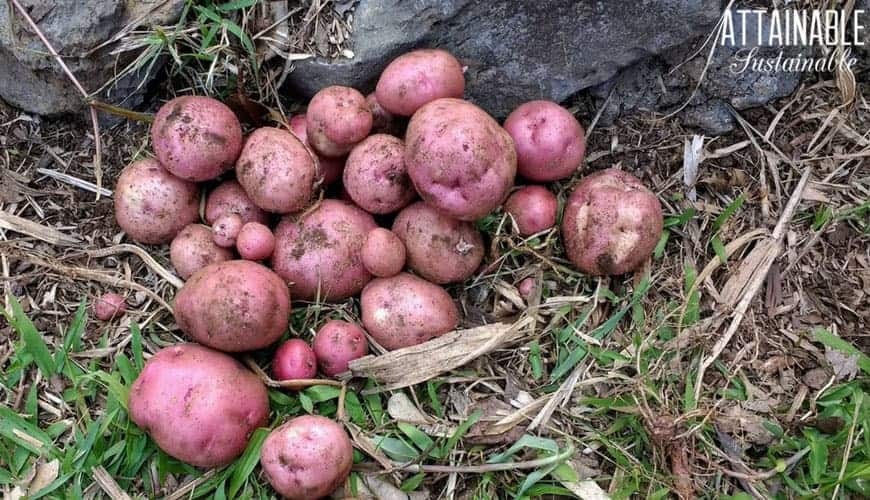
Potatoes
One of America's favorite staple crops, potatoes are easy to grow and will do well in a large container, too. Once the plants are well established, you can carefully dig in and harvest tiny "new potatoes" for summertime meals. When the leaves start to die off later in the season, you'll dig up the entire plant to harvest the full-sized potatoes. Be sure to include some Russet potatoes in your plan; these will keep through the winter.
More on growing potatoes here.
A cup of cooked potato has about 116 calories; a whole potato about 163.
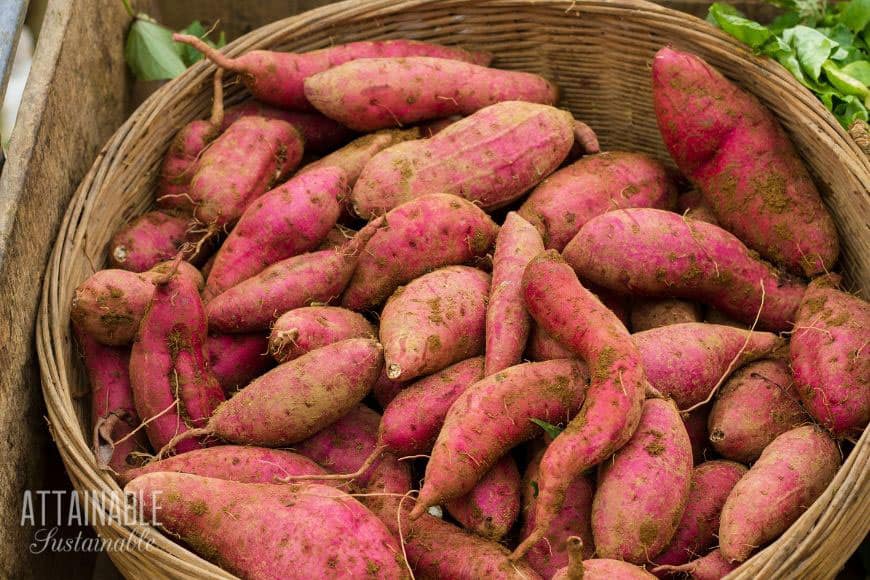
Sweet Potatoes
In the right conditions, sweet potatoes are tremendously easy to grow. These high calorie root vegetables take up a fair amount of space as they vine across the ground and they need a lengthy growing season, but if you can get them in the ground early enough, even many cold region gardeners can have success with sweet potatoes.
You'll need a minimum of 90 days from first frost to last. And just like regular potatoes, sweet potatoes store well for winter use.
More on growing sweet potatoes here
Sweet potatoes provide about 115 calories for a one-cup serving.
Beans
Most people who have been gardening for any length of time are familiar with growing green beans. The dried beans you can get at the store? They come from a plant just like that, but the pods are allowed to mature completely, and the seeds—or beans—are removed from the shell and dried for storage.
Cowpeas, kidney beans, black beans, runner beans — even lentils. You can grow all of these staple crops right in your garden for budget friendly meals and dry them yourself. Beans are a great survival crop to add to your garden.
More on growing beans here
Calorie counts vary based on variety, but a cup of cooked dried beans will net about 200 calories.
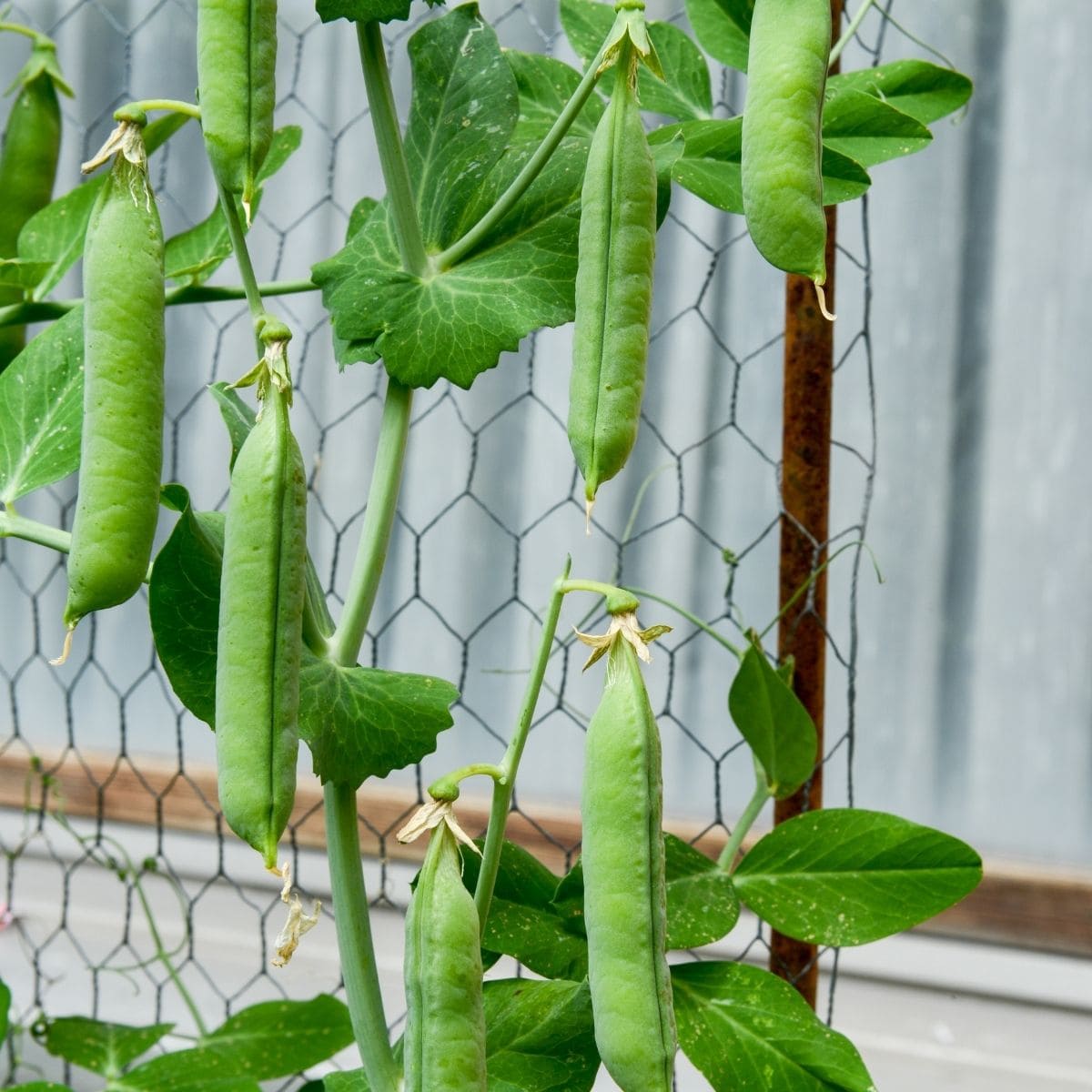
Snap peas growing on a trellis
Peas
Another legume that can be eaten green or harvested as a dried storage food, peas are a delicious addition to survival gardens. Some peas are meant to be eaten shell and all.
For a starchier vegetable with more calories, you'll want to grow shelling peas. Those are grown until they're plump and then the round pea is removed from the shell. These can be eaten fresh or dried for the pantry.
More on growing peas here.
A cup of shelled peas has about 118 calories.
Fava Beans
These large beans are from a different family than the common legumes, and they grow quite differently as well. The plants are upright and sturdy; they produce large pods that are filled with flat beans, often called broad beans. The tips of the plants are edible as greens as well.
A cup of shelled fava beans has about 187 calories.

Winter Squash & Pumpkins
Winter squash and pumpkins aren't quite as calorie dense as the aforementioned vegetables, but they are an easy to grow and store staple crop.
The vining plants do take up a fair amount of space, but they produce generously. Whole pumpkins and squash will last throughout the winter season. (Be sure to cook one up to indulge in this winter squash cheesecake!)
More on growing pumpkins here.
A cup of cooked pumpkin or squash has about 50-80 calories, depending upon variety.
Parsnips
Related to carrots and parsley, parsnips are a root crop that needs a long growing season. I'll be completely honest: I've not had a lot of luck growing parsnips. But that doesn't mean you shouldn't give them a try! It doesn't get a lot of press, but the cream-colored veggie is good roasted, mashed, and in soups.
More on growing parsnips here.
A cup of parsnips nets about 100 calories.
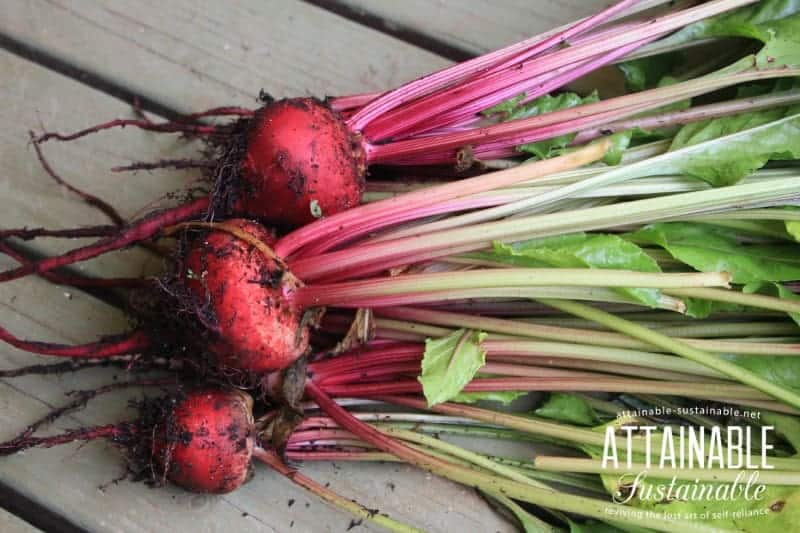
Beets
Fresh beets come in red, orange, or yellow varieties. If your only experience with beets involves a can, you might be surprised at just how lovely they are straight out of the garden. These high calorie vegetables are great roasted with a bit of salt and pepper, tossed with balsamic vinegar in a salad, or added (cooked) to a smoothie.
More on growing beets here.
Beets offer up about 60 calories per cup.
Grains
If you're feeling particularly adventurous, try growing some of your own grains. The crops are not difficult to grow but preparing the grains for the table will require some extra effort in threshing and removing hulls. Grains can be prepared as is or further milled into flour for use in baking.
The calorie counts for different grains varies, but wheat flour has a whopping 455 calories per cup.
More on growing grains here.
Survival Garden Layout
There's no single "right" way to design a garden; every site will have different issues to consider, from available light and soil conditions to the topography of the land. Whether you plant in an in-ground garden bed or in raised beds, here are some things to think about, though, when adding some of the recommended crops to your garden.
- Squash and pumpkins sprawl. A lot. Be sure to plant them where they'll have room to spread out along the ground, without getting in your way.
- Pole beans grow tall and require some sort of support. Grow beans along an existing fence, or build trellises for them to climb.
- Corn gets tall and can cast shade on other crops. Be sure to situate it where it won't shade other sun-loving crops. Some crops– like these — will do okay in the shade of those stalks, though.
If you're an urban gardener concerned about a survival situation, know that many of these crops will thrive in containers, too.
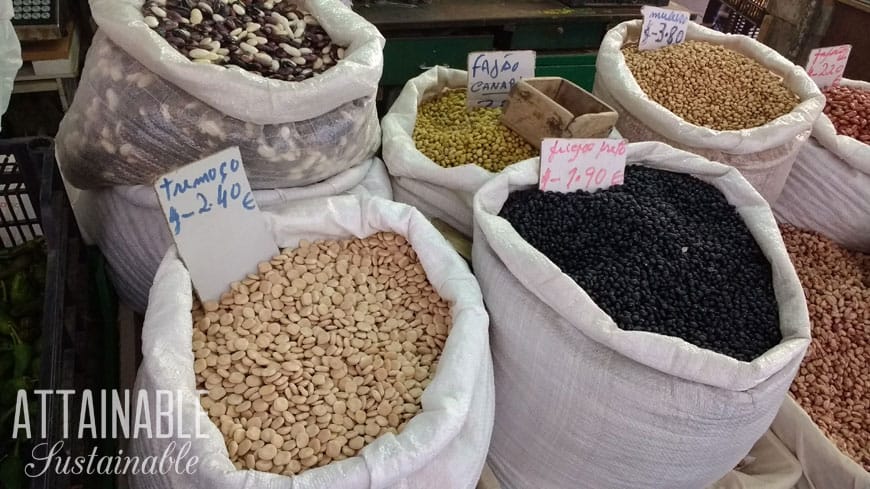
Storage
One of the benefits of some of these crops is that they can be stored for an extended amount of time.
Some, like sweet potatoes, potatoes, and winter squash will store for months without any extra work from you. A root cellar is the traditional way to store these crops, but you can keep them tucked in any cool, dark place you have.
Crops like beans, peas, and corn can be dried for long term storage.
Grains, once removed from their outer husks, can be stored in airtight containers for an extended time. It's best to store them close to their whole form and grind flour as you need it, since flour doesn't have as long of a shelf life.
Other Things to Consider
Your garden will of course include some of the basics like tomatoes, peppers, and zucchini, but consider adding some herbs like basil or thyme for flavor and an assortment of medicinal plants.
Duck eggs
While not technically a garden crop, it's worth noting that duck eggs are more calorie-dense than those you'd get from a chicken. Ducks lay eggs with ahigher fat content than chickens, they're higher in Omega-3 fatty acids, and protein, too. They have nearly double the amount of calories compared to chicken eggs. They're a great source of calories for people who strive to produce much of their own food on site.
One duck egg has about 130 calories. (A large chicken egg has about 72.)
Survive and thrive with staple crops in the garden
If the idea of generating more calories from your garden intrigues you, I highly recommend that you read The Resilient Gardener. Author Carol Deppe goes into explicit detail about growing most of these high calorie vegetables successfully. She lists the varieties of staple crops that she's had the most success with. Read my review of The Resilient Gardener for more.
Originally published in February 2014; this post has been updated.
Source: https://www.attainable-sustainable.net/survival-garden/

0 Response to "Calorie Dense Foods Thats Easy to Grow in Urban Areas"
Post a Comment